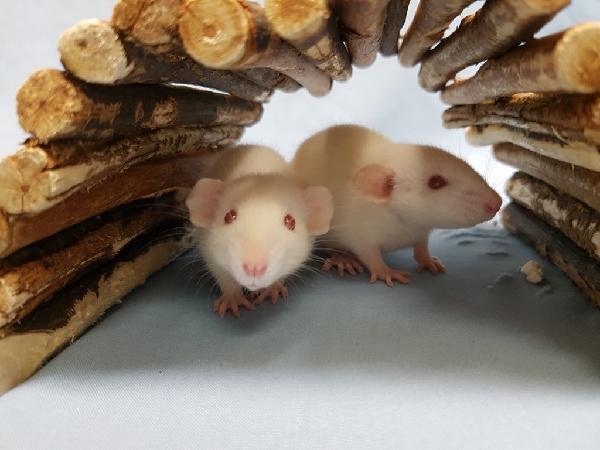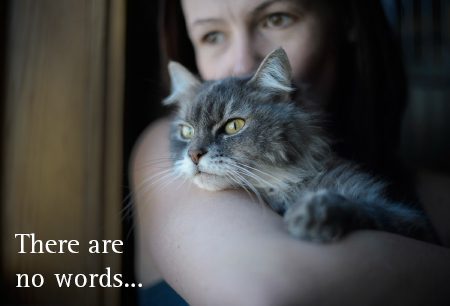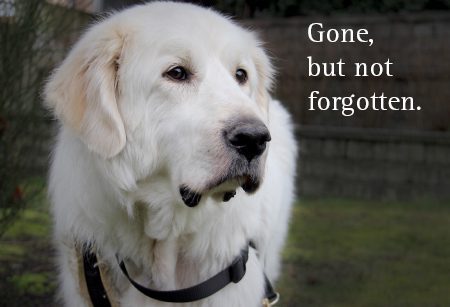The BC SPCA does not support the keeping of wild or exotic animals, including their hybrids, as pets* due to the difficulty of providing them with the Five Freedoms and the risks posed to the health and safety of people, other animals and the environment.
The BC SPCA acknowledges that there are many exotic animals, such as parrots, snakes, lizards and turtles, currently living in homes. However, even when born in captivity, exotic animals are not considered domesticated and therefore have the same needs as they would in the wild. Guardians of exotic animals must strive to meet the Five Freedoms by employing husbandry practices and providing species-specific enclosures that meet their environmental, dietary, social and behavioural requirements, as well as by seeking appropriate veterinary care.
To safeguard the welfare of wild and exotic animals, the BC SPCA supports:
- The adoption of legislation, regulation and policies that prohibit their importation, breeding, display and sale, protect their health and welfare, and minimize their risk to human health and safety;
- The development and use of the highest professional accreditation standards and programs that evaluate and improve their care and handling; and
- Further research and development in all areas of their management that have an impact on welfare.
The keeping of wild animals as pets in B.C. is illegal under the provincial Wildlife Act. The release of exotic animals into the wild is considered abandonment and is therefore a criminal offense pursuant to the Criminal Code of Canada and the B.C. Prevention of Cruelty to Animals Act. The BC SPCA supports preventing abandonment of exotic animals, which can have devastating impacts on native species and habitats, through public education.
Approved by the Board of Directors – September 2021
(replaces Exotic Companion Animals, April 2007)
Background
There are an estimated 1.4 million exotic pets in Canada1, ranging from small invertebrates such as stick insects and scorpions to large vertebrates such as lions and alligators. Notably, however, this figure does not include fish. Given that fish are the third most commonly kept animals after cats and dogs2, the actual number of exotic pets in the country is likely far greater.
Despite their popularity as pets, exotic animals can pose serious public health and safety risks. One considerable health risk is zoonotic disease involving bacteria, viruses, fungi or parasites passed from these animals to people.3, 4 Safety risks include injuries from teeth, beaks, claws, talons, tails, constriction, poison or venom. Furthermore, any injury can potentially become secondarily infected by the pathogens associated with exotic animal bites and scratches.5
Animal welfare is also a serious concern. Guardians of exotic pets are faced with a lack of research into proper housing and care for these animals, the proliferation of poor or unsubstantiated care information online, and a lack or inaccessibility of resources such as proper diets and specialized veterinary care.6 Therefore, these animals often suffer physically and psychologically under even well-intentioned human care. Examples include:
- Nutritional problems from inadequate or inappropriate diets (e.g., metabolic bone disease due to calcium or vitamin D3 deficiency, leading to swollen joints and limbs, shell softening and deformation, and fractures7; high-fat seed mixes resulting in obesity and fatty liver and heart disease8)
- Housing and husbandry practices that restrict or prevent natural behaviours and lead to abnormal behaviours (e.g., single housing that eliminates opportunities for socializing with members of the same species9; enclosures that are too small to accommodate normal patterns of movement10; clipping wings to prevent flying while also reducing the ability to exercise and escape from danger11; barren containers that do not permit hiding from perceived threats12)
- Illnesses or injuries from inappropriate environmental conditions (e.g., thermal burns from improper heat sources13)
Due to the cost and difficulties of caring for exotic pets properly and, in some cases, their potentially long lifespan and large body size, these animals often lose their appeal over time.14 However, guardians who no longer want their pets are faced with few options for placement. There are very few suitable sanctuaries and most animal shelters do not have specialized training to handle or appropriate enclosures to house them. As a result, many exotic animals are rehomed online or released outdoors.
In addition to being illegal, abandoning exotic animals can have devastating environmental effects in both terrestrial and aquatic habitats. Although some exotic animals eventually die from starvation, exposure or predation when released into a novel environment, others can breed and thrive (e.g., bullfrogs, red-eared slider turtles, goldfish, koi). They can also put native species at risk through disease and parasite exposure, competition for resources and predation.
Each year, millions of exotic animals are captured, bred and transported around the world for the commercial pet trade. Apart from the obvious animal welfare concerns, this level of exploitation impacts the health of populations to the point where some species have become endangered and threatens ecosystems due to the unique ecological roles these animals often play. Although in many cases it is illegal to take exotic animals from the wild, the people involved accept the risk because it is less expensive to capture wild animals than breed them in captivity.
Captive breeding may avoid some of the ecological issues associated with wild capture but is not without significant animal welfare concerns. To increase efficiency and profit, many breeders house large numbers of exotic animals in small, barren enclosures. Captive breeding can also serve as an effective cover for the illegal trade as wild-caught individuals can easily be assimilated into existing breeding populations and labelled ‘captive-bred.’
Captive-bred animals may then be sold to wholesalers which house many different species of exotic animals in large warehouses. Although mortality rates of 70 per cent are not uncommon15, wholesalers remain profitable because of the sheer volume of animals they sell.
Changes to the B.C. Wildlife Act in 2008 prohibited the sale, breeding, importation and display of certain exotic animals designated as Controlled Alien Species (CAS).16 As the provincial government has the responsibility of ensuring public safety, the CAS list reflects only those exotic animals who pose a serious risk to human health and safety, including large cats, primates and venomous snakes. In a number of cases, exotic animals on the CAS list living in B.C. before 2009 were grandfathered under specific permit conditions. Research institutions, film companies, rescue centres and accredited zoos must have government permits in order to keep any CAS-listed animals.
Even with such restrictive legislation in place, B.C. still ranks fourth in the country for exotic pet ownership after Ontario, Quebec and Alberta.1 Unfortunately, the legislation does not apply to numerous other exotic animal species being kept. Many less common exotic animals such as kangaroos and zebras are still allowed, as are the more common exotic species such as ball pythons, bearded dragons and leopard geckos often sold in pet stores.
As a result, the BC SPCA recommends that municipal governments fill in the gap by adopting a “positive list” of allowable animals instead of a list of prohibited species. Benefits include:
- Positive lists are able to keep up with a constantly changing industry. Unlike negative lists, they do not have to be amended every time a new exotic animal enters the pet trade.
- Positive lists are easier to understand and enforce. By necessity, negative lists are longer and more complicated than positive lists and, as such, can be difficult for enforcement personnel to interpret.
- Positive lists protect animal welfare and human health and safety by shifting the burden of proof. Whenever someone wants to add a new exotic animal to a positive list, they have to prove that the species satisfies whatever criteria are in place for inclusion.
See also:
Wild and Exotic Animals in Zoos, Aquariums and Other Permanent Captivity
Background updated – September 2021
References
1 World Animal Protection 2019 Risky business: The unregulated exotic pet trade in Canada. World Animal Protection: Ontario, Canada
2 Perrin T 2009 The business of urban animals survey: The facts and statistics on companion animals in Canada. Canadian Veterinary Journal 50: 48-52
3 Mitchell MA and Tully TN (eds) 2009 Manual of Exotic Pet Practice. Saunders: Missouri, US
4 Faulder KE, Simmonds K and Robinson JL 2017 The epidemiology of childhood salmonella infections in Alberta, Canada. Foodborne Pathogens and Disease 14: 364-369
5 Warwick C and Steedman C 2012 Injuries, envenomations and stings from exotic pets. Journal of the Royal Society of Medicine 105: 296-299
6 Companion Animal Welfare Council 2003 Report on the welfare of non-domesticated animals kept for companionship. Companion Animal Welfare Council: Devon, UK
7 Rendle M and Calvert I 2019 Nutritional problems. In: Girling SJ and Raiti P (eds) BSAVA Manual of Reptiles, 3rd Edition pp 365-396. British Small Animal Veterinary Association: Gloucester, UK
8 Stanford M 2005 Nutrition and nutritional diseases. In: Harcourt-Brown N and Chitty J (eds) BSAVA Manual of Psittacine Birds, 2nd Edition pp 136-154. British Small Animal Veterinary Association: Gloucester, UK
9 Seibert LM 2006 Social behavior of psittacine birds. In: Luescher A (ed) Manual of Parrot Behavior pp 43-48. Blackwell Publishing: Iowa, US
10 Warwick C, Grant R, Steedman C, Howell TJ, Arena PC, Lambiris AJL, Nash AE, Jessop M, Pilny A, Amarello M, Gorzula S, Spain M, Walton A, Nicholas E, Mancera K, Whitehead M, Martínez-Silvestre A, Cadenas V, Whittaker A and Wilson A 2021 Getting it straight: Accommodating rectilinear behavior in captive snakes—A review of recommendations and their evidence base. Animals 11: 1459-1479
11 Grant RA, Montrose VT and Wills AP 2017 ExNOTic: Should we be keeping exotic pets? Animals 7: 47-57
12 Pleeging CCF and Moons C 2017 Potential welfare issues of the Siamese fighting fish (Betta splendens) at the retailer and in the hobbyist aquarium. Vlaams Diergeneeskundig Tijdschrift 86: 213-223
13 Varga M 2019 Captive maintenance. In: Girling SJ and Raiti P (eds) BSAVA Manual of Reptiles, 3rd Edition pp 36-48. British Small Animal Veterinary Association: Gloucester, UK
14 Royal Society for the Prevention of Cruelty to Animals 2017 Understanding the motivations of beginner reptile owners. Royal Society for the Prevention of Cruelty to Animals: West Sussex, England
15 Ashley S, Brown S, Ledford J, Martin J, Nash AE, Terry A, Tristan T and Warwick C 2014 Morbidity and mortality of invertebrates, amphibians, reptiles, and mammals at a major exotic companion animal wholesaler. Journal of Applied Animal Welfare Science 17: 308-321
16 Province of BC 2021 Controlled alien species. https://www2.gov.bc.ca/gov/content/
environment/plants-animals-ecosystems/cas
Definitions
Companion animals: Domesticated animals who have been selectively bred to live and thrive in mutually beneficial relationships with humans and who are kept primarily for the purpose of companionship.
Domesticated animals: Species that have been selectively bred by humans over hundreds and or thousands of generations in order to alter their genetics to create animals who are dependent, docile, predictable and controllable, and who no longer occupy an ecological niche in the wild.
Exotic animals: Species that are non-domesticated, non-indigenous wild animals, whether captured from the wild or captive-bred.
Five Freedoms: A concept first developed by the Brambell Committee, formed by the UK government to examine the conditions on commercial farms. Now internationally recognized, the Five Freedoms are considered applicable to all animals.
The BC SPCA’s Five Freedoms (adapted from the original list) are:
- Freedom from hunger and thirst
- Freedom from pain, injury and disease
- Freedom from distress
- Freedom from discomfort
- Freedom to express behaviours that promote well-being.
The BC SPCA’s Five Freedoms form the basis of the Society’s Charter and describe conditions that must be fulfilled in order to prevent the suffering of all animals in human care. The Society acknowledges that these freedoms are not enforceable and that absolute provision of these freedoms may not be possible, but strongly encourages all animal guardians to strive to provide them.
Hybrid wild/exotic animals: Individual animals who are the offspring of wild/exotic animals who have bred with either domesticated animals or other species of wild/exotic animals (e.g., wolf-dog hybrids).
Stress: The physiological response to a stimulus in order to help an animal cope with his/her environment. The stress response can be associated with either positive emotions (e.g., excitement, arousal) or negative emotions (e.g., anxiety, frustration), depending upon the nature of the stimulus or the animal’s perception of that stimulus.
Suffering: An enduring negative affective state. Suffering is associated with feelings such as pain, hunger, fear and anxiety. All sentient beings are capable of suffering.
Tame/captive-bred exotic or wild animals: Individual exotic/wild animals who have been habituated to living amongst humans but have not been domesticated, and therefore still retain the genetic biological and behavioural characteristics of their non-captive counterparts.
Welfare: An animal’s quality of life. An animal’s welfare depends upon both his/her physical health and affective state.
Animals experience good welfare when they are able to experience positive feelings arising from pleasurable activities and the fulfillment of behavioural needs, and when they are free from poor physical health and negative feelings (e.g., pain, discomfort, hunger, thirst, fear and frustration).
Wild animals: Species that have not been domesticated. Wild animals have evolved in complex ecosystems resulting in mutual interdependences with other animals and the surrounding environment. Wild animals may be exotic or indigenous, and wild-born or captive-bred.
* Normally, the BC SPCA prefers the term “companion animal” to the term “pet” as it signifies the mutually beneficial relationship that can exist between domesticated animals and humans. However, given that exotic animals are not domesticated, the term “pet” is used in this position statement instead.





